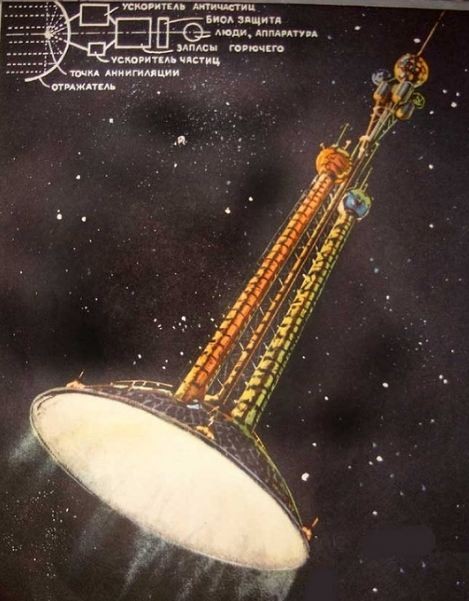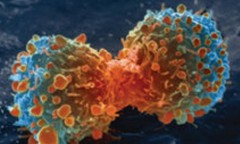By Arthur Dominic J. Villasanta , | March 26, 2017

Photon rocket concept form the 1960s.
The physics proves it can't be done but a Norwegian finance professor argues his math proves it will be possible to build a version of the fabled "photon rocket," which has so far remained firmly rooted in science fiction.
In a paper to be published in the peer-reviewed scientific journal Acta Astronautica, Espen Gaarder Haug claims a "Planck photon rocket drive" can generate such tremendous thrust it can reach Mars in just three minutes and four seconds. A one-way trip to Mars takes anywhere from nine months to over a year to accomplish with current technology.
Like Us on Facebook
Haug teaches quantitative finance at the Norwegian University of Life Sciences.
Theoretically, Planck photon rocket drives can attain velocities equal to 99.999 percent the speed of light -- if a way can be found to surmount the insurmountable obstacles that hinder the production of this type of engine.
"Laboratory experiments show that the concept of driving an object forward by using only photons is clearly possible," said Haug. "But there is still a long way to go in developing large photon rockets that could send materials or people into outer space."
A photon rocket's thrust comes from photons (electromagnetic radiation in the form of light), which is the rocket's "fuel." This fuel is converted into light, which leads to radiation pressure that propels the rocket forward.
Haug argues that the theoretical ultimate speed limit of any spacecraft is just below the speed of light in a vacuum (186,282 miles per second). Haug shows that in theory, two Planck masses of fuel will be needed for every fundamental particle in a rocket's payload.
One Planck mass is theorized to have about the same mass as a flea egg. Planck mass particles are thought to be more massive than any known observed fundamental particle, but as yet have never been detected.
But in Haug's theory, Planck mass particles will be generated at the instant two photons collide. Haug says the fuel for such a rocket could take any form as long as its technology allowed for 100 percent conversion into light energy, where all of the fuel's mass could be converted for directional thrust.
The problems facing the construction of a photon rocket are well nigh insurmountable using current technology. A photon rocket would have to be massive. Some pundits say it might be the size of the Moon, to accommodate its propellant.
This propellant will have to produce "pure photons" and the only way to product this "fuel" will be to smash electrons and positrons (which are anti-electrons) together in an anti-matter collision.
There are no vast reserves of positrons anywhere near Earth. A photon rocket's propellant would have to be manufactured, a process that demands unimaginable quantities of energy.
-
Use of Coronavirus Pandemic Drones Raises Privacy Concerns: Drones Spread Fear, Local Officials Say

-
Coronavirus Hampers The Delivery Of Lockheed Martin F-35 Stealth Fighters For 2020

-
Instagram Speeds Up Plans to Add Account Memorialization Feature Due to COVID-19 Deaths

-
NASA: Perseverance Plans to Bring 'Mars Rock' to Earth in 2031

-
600 Dead And 3,000 In The Hospital as Iranians Believed Drinking High-Concentrations of Alcohol Can Cure The Coronavirus

-
600 Dead And 3,000 In The Hospital as Iranians Believed Drinking High-Concentrations of Alcohol Can Cure The Coronavirus

-
COVID-19: Doctors, Nurses Use Virtual Reality to Learn New Skills in Treating Coronavirus Patients










